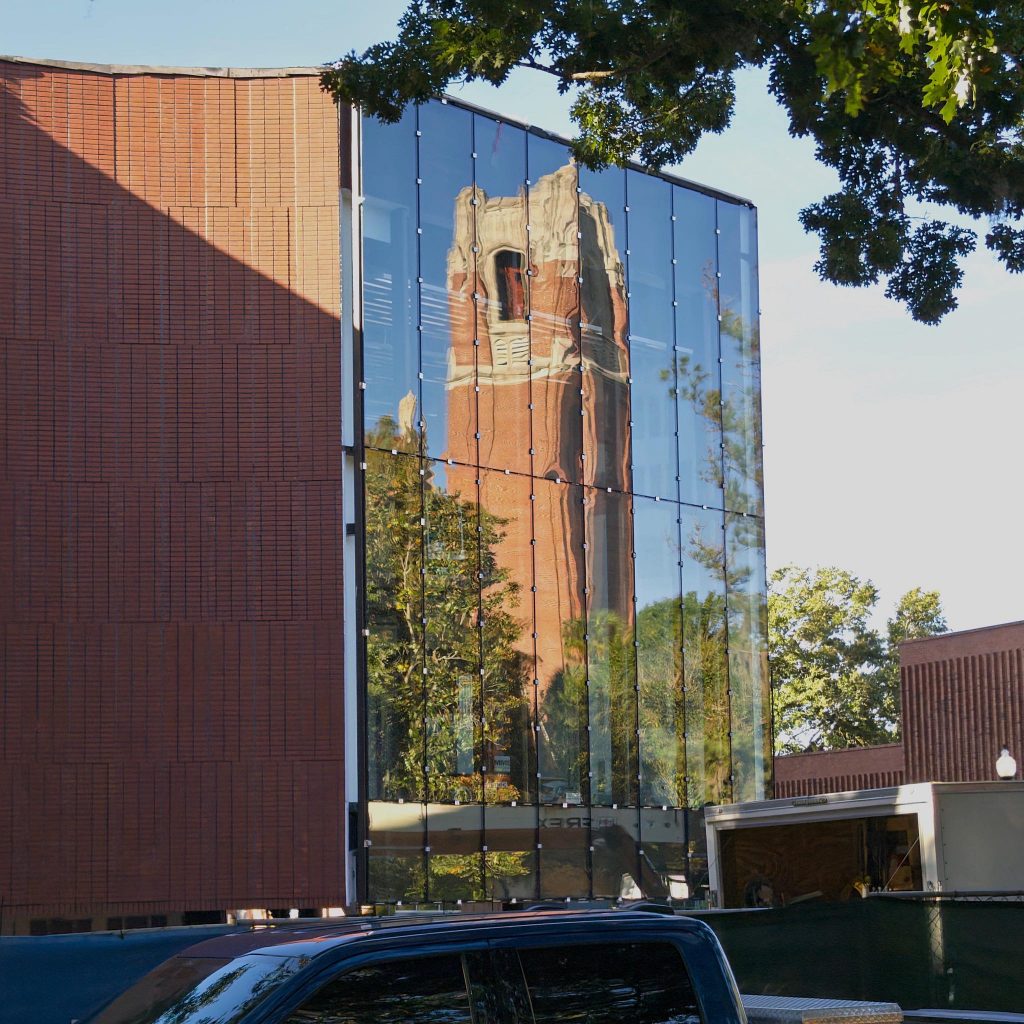The University of Florida College of Design, Construction and Planning (DCP) will officially open the Bruno E. and Maritza F. Ramos Collaboratory with a ribbon-cutting ceremony at 4 p.m. on Thursday, Oct. 16. Situated on campus at 1481 Stadium Rd., the $50 million, 50,000-square-foot facility marks a landmark advancement in merging education, research, and industry collaboration across the built environment disciplines.
“The Ramos Collaboratory represents the future of design, construction, planning education and research,” said DCP Dean Chimay Anumba. “It embodies our commitment to innovation, collaboration, and discovery—bringing together the brightest minds and the latest technologies to shape a more resilient built environment.”
Conceived as a dynamic learning environment, the Ramos Collaboratory is designed to propel innovation in sustainable design, construction, and planning technologies, and interdisciplinary exchange. The Siemens Lab for Technology and Innovation will help empower faculty, students, and industry collaborators to test and refine future-ready building systems and sustainability models.
Siemens Building X® Digital Twin platform, a sophisticated virtual counterpart capable of tracking and optimizing real-time building performance, includes advanced sensors to gather data on energy efficiency, air quality, occupancy, and lighting, offering a state-of-the-art platform for both teaching and discovery. Adding to the tech toolset, Siemens also donated a robotic dog, which will autonomously patrol the building and collect information on operational performance and environmental conditions.
Designed for Students
Deliberately centered around students, the focus is on open, adaptable spaces that encourage collaboration and hands-on learning. At its core sits the Stellar Creative Commons, envisioned as the “living room” of the college, a welcoming hub for informal gatherings, creative exchange, and community building.
“This building was created with our students at its heart,” Anumba said. “The Ramos Collaboratory offers a space where they can explore ideas, test emerging technologies, and collaborate across disciplines to solve real-world challenges.”
Hallmark laboratories have been strategically integrated into the new space. The Fabrication Lab, formerly located off campus, has been expanded to accommodate advanced 3D printing and digital modeling, enabling larger, more diverse student teams to work side by side. The College’s wood shop has also been relocated, providing easier access and improved connectivity for students. A highly visible Autodesk Design and Making Lab will showcase the latest smart automation technologies via construction robotics to both academic and public audiences.
The Collaboratory also brings together the College’s research centers and institutes into one centralized Jon and Jodi Kurtis Research Hub. Meanwhile, the Kornblau Family Virtual Design and Construction (VDC) Lab delivers immersive, large-scale simulations that enhance the visualization, analysis, and refinement of complex building systems.
Moving Towards the Future While Honoring UF’s Past
Architecturally, the Ramos Collaboratory blends modern efficiency with contextual harmony. A steel frame clad in prefabricated brick nods to traditional masonry while allowing for a gracefully curved façade that emphasizes daylight and reduces heat gain. Inside, sweeping interior windows create transparency and connection, while upper-level views frame iconic landmarks such as Century Tower and surrounding historic buildings.
The building’s Multipurpose Hall further extends its impact, offering a premier venue for lectures, symposia, and professional events, with capacity for up to 200 participants.
At the technological core, NVIDIA’s Omniverse computing platform powers the Collaboratory’s digital ecosystem. By integrating live sensor feeds and maintenance records, it produces an interactive, predictive model of the building. This system allows researchers and students to run simulations—from energy use to ventilation strategies—while doubling as a training environment for artificial intelligence applications in construction and facility operations.
The Ramos Collaboratory became a reality through a historic fundraising campaign, combining $25.1 million in private support with $25 million in state investment.
